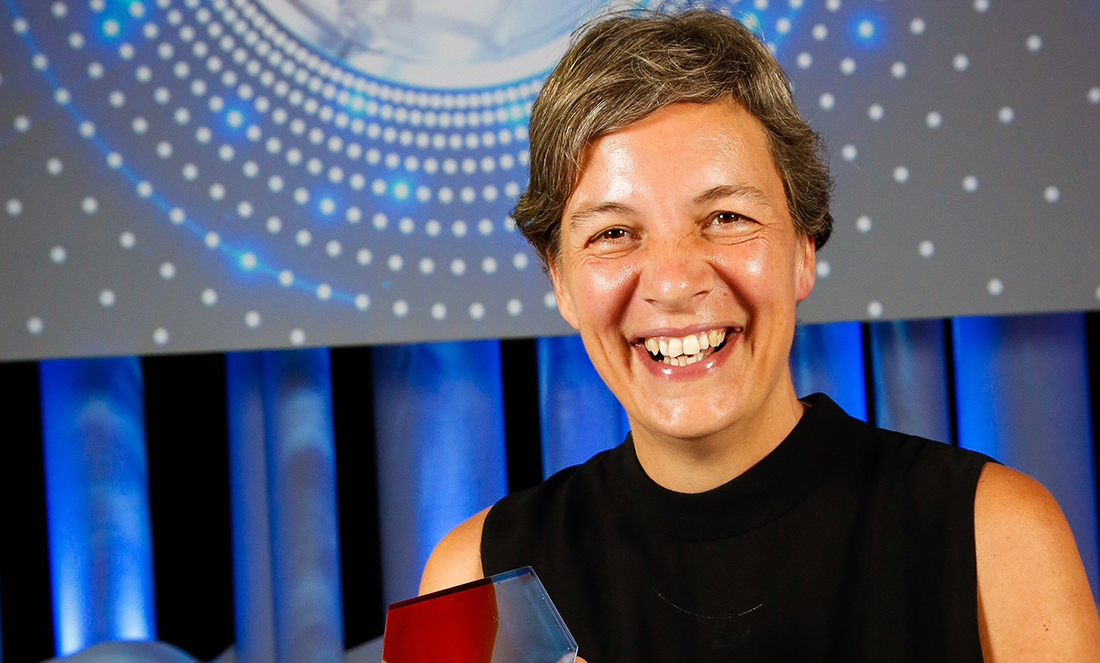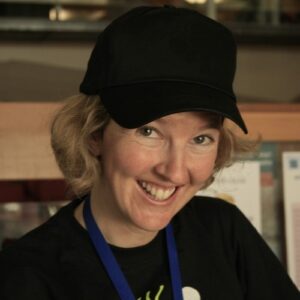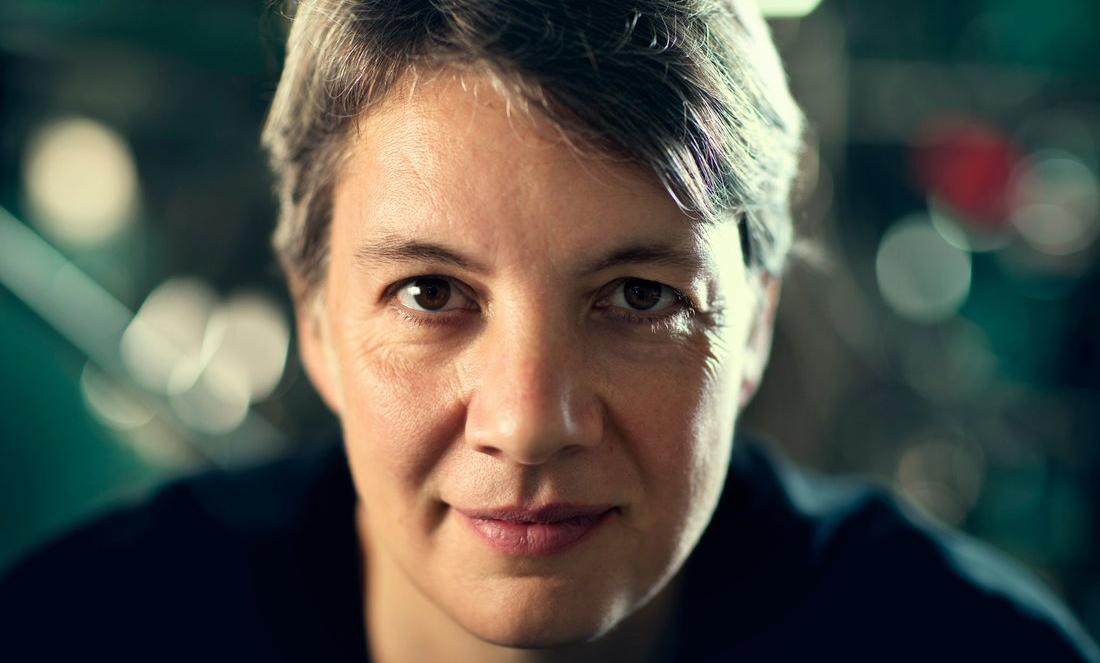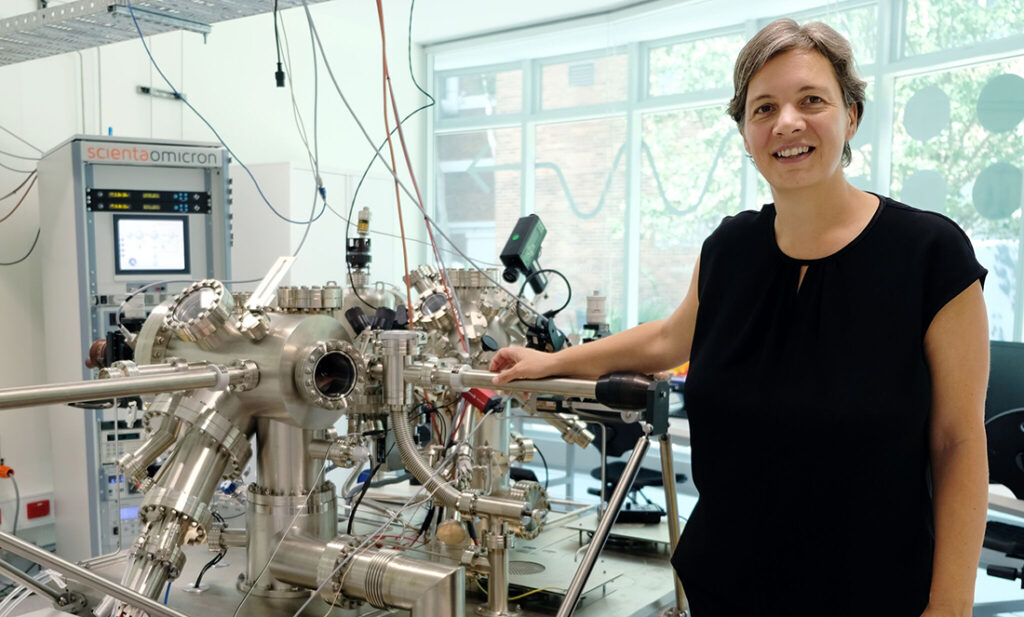Professor Michelle Simmons wakes up every morning before the crack of dawn. She leads a team of nearly 200 researchers across seven universities in the race to develop an atomic-scale computer. She’s also editor-in-chief of Nature Partner Journal Quantum Information, founder and board member of Silicon Quantum Computing and has a solid schedule of responsibilities as 2018 Australian of the Year.
Exhausted yet?
When you hear of all Michelle achieves in her week, it’s tempting to assume that, along with creating a new field of atomic electronics, she’s also uncovered some sort of quantum time warp that gives her more than 24 hours in a day.
If only it were that easy.
But then, Michelle’s just not into ‘easy’.

Nothing worth having comes easy
Today described as one of the best physicists in the world, Michelle actually gave up studying physics in high school. She’d been advised to study what she loved.
But sometimes the things we inherently love aren’t the things that bring us the greatest satisfaction.
Michelle enjoyed studying history and English literature, but she just couldn’t forget the jaw-grinding brain-bending satisfaction of physics. She craved the challenge of solving difficult problems.
Stay hooked on a challenge
Michelle re-enrolled in physics, went on to study a double degree in physics and chemistry at Durham University, then completed her PhD in 1992. As a physics postdoc, Michelle studied at the Cavendish in Cambridge, getting her first taste of quantum electronics. From that moment, she was hooked.
“Deep down, I’ve always wanted to understand how the world around me works,” she says.
“I wanted to break it down into something I could understand at a fundamental level, descriptively in words, mathematically and visually. Building a quantum computer encapsulates all of that.”
So, what is quantum computing?
Today, Michelle is the director of the ARC Centre of Excellence for Quantum Computation and Communication Technology, based at UNSW.
Michelle and her team are building a new generation of computer, atom by atom. They’ve invented a conducting wire that’s only four atoms wide, a transistor that’s made from a single phosphorus atom, and they’re using the spin of an electron to encode information.
At this teeny-tiny scale, high school laws of classical physics just don’t cut it. Instead, atoms sometimes act like waves, sometimes like particles. Quantum-level interactions take over, which promises a whole new way of computing.
Where traditional computing uses ‘bits’ that can represent either zero or one, quantum computing uses ‘qubits’, which can be both zero and one. Or neither. Or bits of in-between. It’s this ability to simultaneously hold multiple bits of information that makes quantum computing so exciting.
“Computing based on quantum principles will allow us to do certain calculations in real time that might otherwise take thousands of years,” Michelle says.
“If we can encode information in quantum states, it’s anticipated that we’ll be able to get an exponential speed-up in computing power.”
If this makes your brain spin, imagine the challenge of trying to control and create a quantum computer. Lucky Michelle’s still not a fan of ‘easy’.
“In our field of atomic engineering, everything we do has never been done before, so we are learning new things every day, which is incredibly rewarding.”
“We are pushing the boundaries of what is known. It’s great!” she says.
When times get tough
There’s a legendary story of how 8-year-old Michelle beat her dad at chess in her first-ever game. Hearing that, you may think things have always come easy for her. You’d be wrong.
Of the 200+ students in her year at an inner-London comprehensive school, only 16 kids went on to study A-level (university entrance) exams, and Michelle was one of only two to pass.
As a PhD candidate, her dream project with NASA never eventuated when the crystals she was meant to study didn’t grow. And as a postdoc at Cambridge, she observed exciting new quantum phenomena in gallium arsenide transistors but found these effects were fragile and difficult to replicate. (And PS: Dad went on to beat her 10 games straight!)
So how does she always manage to bounce back?
“It’s essential to work hard, choose the right pathway and keep the end goal in mind,” Michelle says.
“It’s important to break the problem down into sizeable chunks and celebrate new results and new knowledge along the way.”
In silicon quantum computing, Michelle’s favoured pathway, this means pushing forward, qubit by qubit, to a future where today’s supercomputers are eclipsed.
Inventing the future
Michelle’s team create qubits by placing phosphorus atoms in a bed of silicon. Figuring out how to make one single-atom qubit was super-tricky, two is becoming easier, and Michelle aims to develop a 10-qubit integrated circuit by 2022 and 100-qubits after that.
Does she ever doubt it can be done?
“In science, doubt is generally considered an asset,” she says. “Doubting your understanding of something … makes you try harder. As a consequence, I would say I embrace doubt, it’s part of being a human.”
But when the doubts get overwhelming, it’s time for bed.
“Doubts creep in when I get overtired, and I generally find a good sleep helps,” Michelle says.
“In general, you should be confident of your own abilities. Your ability to grow and to recognise that success ultimately comes from hard work.”
From here, the path to a future where Australia and the world can benefit from commercially available quantum computing is a complex and challenging one.
Yet Michelle’s confident she’s moving in the right direction.
“I have a clear vision of the way ahead, what needs to be done and how to get there,” she says.
“It’s important to have the ability to concentrate and keep going until the job is done.”











